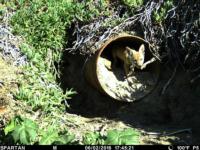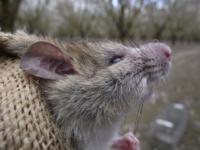Natural Resources
173 – Mitigating Pollutants in Run-Off from Urbanized Environments
Principal Investigator: Dr. Darren Haver, Center Director, UC ANR South Coast Research and Extension Center. For more project information, click here.
Urban runoff from both irrigation and stormwater is a significant source of pollutants to local waterbodies where it impacts beneficial uses such as drinking water quality, wildlife habitat, and recreation. The majority of these pollutants are transported to local waterbodies during the first few storms following an extended dry period. During dry periods, pollutants accumulate at or near the source or may be carried further in the constant low flows generated by excess irrigation, car washing, and the hosing down of driveways and sidewalks. The main goal of this project is to develop, test, and implement urban landscape best management practices (BMPs) that can effectively reduce urban pollutant loading during dry periods, minimizing pollutants in first flush storm events. Three parallel residential landscapes were constructed along with a fourth graded plot representing a 100% pervious landscape. The landscapes are integrated with different degrees of BMP implementation in the areas of irrigation, plant selection, pest control tactics, and infiltration. Water use, runoff volumes, soil moisture levels, and pollutants in runoff are monitored in order to determine if the management practices are successfully reducing water use and pollutant loads.
219 - Physiological & Morphological Reponses to long-term Changes in Water Availability
Principal Investigator: Dr. Jennifer Funk, Department of Biological Sciences, Chapman University. For more project information, click here.
This research addresses how leaf, stem and root traits collectively influence organismal responses to different precipitation scenarios across multiple species in a Mediterranean-climate ecosystem. Precipitation in arid and semi-arid environments can vary strongly within and across years and plant fitness can depend on rapid or efficient utilization of water during these events. Plant species adapted to arid systems possess numerous leaf, stem and root traits that serve to minimize water stress, but it remains unclear whether these water conservation traits limit a plant’s ability to rapidly respond to precipitation events and how water acquisition and conservation traits correspond to plant fitness. The proposed research is organized around two questions: (1) is there a trade-off between the ability to respond to sudden changes in water availability and a water conservation strategy, and (2) how do traits pertaining to water acquisition and conservation correlate with plant fitness and how does this depend on the magnitude and frequency of precipitation? I will examine these questions in four annual and six perennial species from a southern California coastal sage scrub community.
227 Southern California Urban Coyote Health and Ecology Study
Principal Investigator: Dr. Niamh Quinn, Vertebrate Pest Advisor, UC Cooperative Extension. For more project information, click here.

228 Southern California Urban Rodent Research
Principal Investigator: Dr. Niamh Quinn, Vertebrate Pest Advisor, UC Cooperative Extension - Orange County. For more project information, click here.


